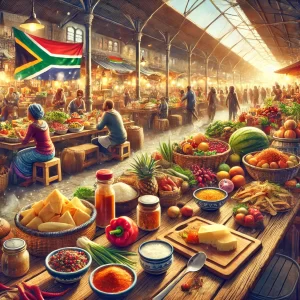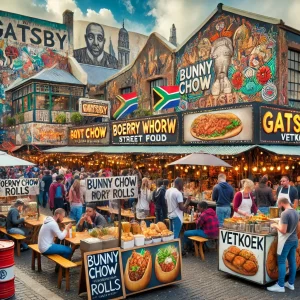Braai, the South African barbecue, is more than just a way to cook food; it’s a beloved tradition that brings family and friends together. Rooted in the country’s rich cultural history, braai is an integral part of South African life, celebrated with a sense of camaraderie and festivity. In this article, we’ll delve into the history of braai, its significance, and the essential elements that make it uniquely South African.
The History and Significance of Braai
The term “braai” comes from the Afrikaans word for “grill” or “roast.” While similar to barbecues found around the world, braai holds a special place in South African culture. It is a symbol of social unity, where people from diverse backgrounds come together to share a meal and celebrate life. National Braai Day, celebrated on September 24th, coincides with Heritage Day, underscoring braai’s importance as a unifying tradition.
Key Elements of a Traditional Braai
- The Braai Grill The heart of any braai is the grill. South Africans use a variety of grills, from simple open-flame setups to elaborate brick-built braai stands. Wood and charcoal are the preferred fuels, imparting a distinct smoky flavor to the food. The process of building and tending the fire is an art in itself, often becoming a communal activity.
- Meat Meat is the star of the braai. Popular choices include boerewors (a traditional sausage made from beef and pork), lamb chops, steaks, and chicken. The meat is typically marinated in a variety of spices and sauces, adding layers of flavor. Biltong (dried, cured meat) and droëwors (dried sausage) are often served as snacks while the main meal cooks.
- Side Dishes A braai is not complete without a selection of delicious side dishes. These may include:
- Pap: A traditional maize porridge, often served with a tomato and onion sauce.
- Chakalaka: A spicy vegetable relish made with tomatoes, onions, and peppers.
- Potato Salad: A creamy, tangy accompaniment that balances the smoky flavors of the meat.
- Roosterkoek: Grilled bread rolls that are crispy on the outside and soft on the inside.
- Beverages Beer is a popular choice at braais, with local brews being particularly favored. South African wines, especially those from the Western Cape, also complement the meal beautifully. Non-alcoholic options include traditional drinks like ginger beer and rooibos tea.
The Social Aspect of Braai
One of the most significant aspects of braai is the social experience. It’s a time for laughter, storytelling, and creating memories. The host, often referred to as the “braai master,” takes pride in their grilling skills, while guests gather around the fire, enjoying the warmth and aroma. Music, dancing, and even games are common features of a braai, making it a lively and joyous occasion.
Modern Braai Trends
While traditional braai remains popular, modern variations have emerged, reflecting South Africa’s dynamic culinary scene. These include:
- Vegetarian and Vegan Braais: With the rise of plant-based diets, many are incorporating vegetables, tofu, and meat substitutes into their braai menus.
- Fusion Flavors: Combining elements from different cuisines, such as Asian-inspired marinades or Mediterranean side dishes, adds a new twist to the traditional braai.
- Gourmet Braai: Focusing on high-quality ingredients and sophisticated techniques, gourmet braai elevates the experience to a fine dining level.
Conclusion
The tradition of braai is a cherished part of South African culture, representing more than just a meal. It’s a celebration of community, heritage, and the joy of sharing good food. Whether you prefer a classic meat-filled braai or a modern, health-conscious version, the essence of braai remains the same: bringing people together to enjoy the simple pleasures of life.




